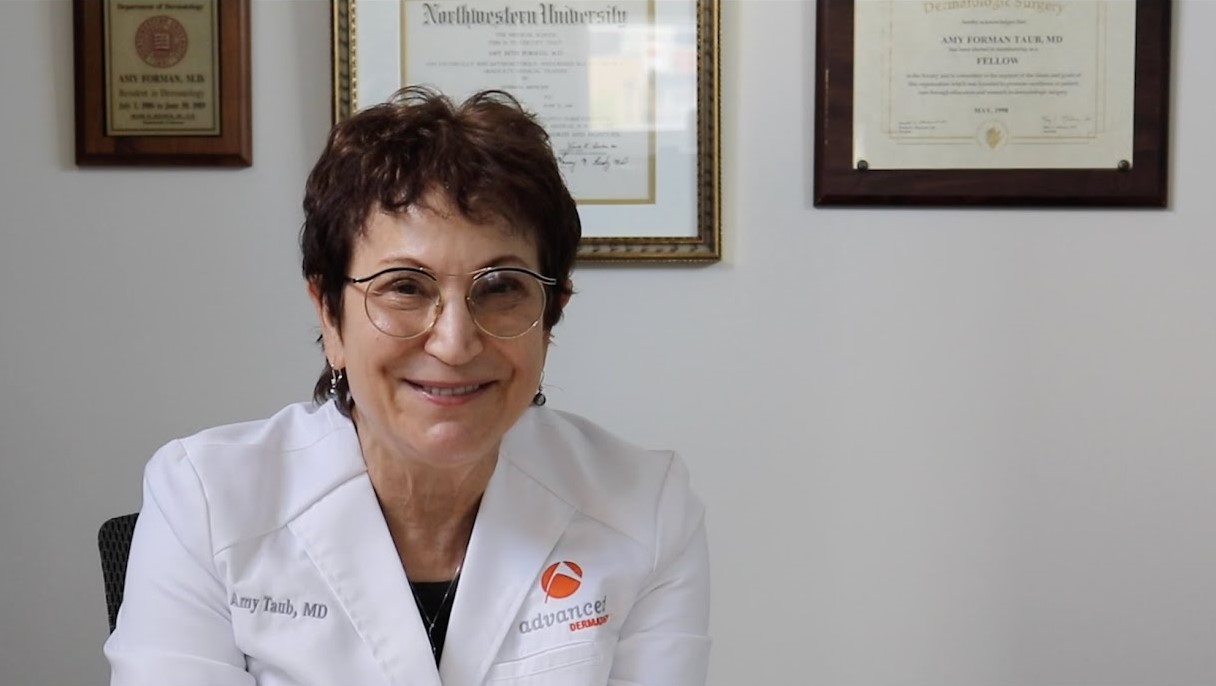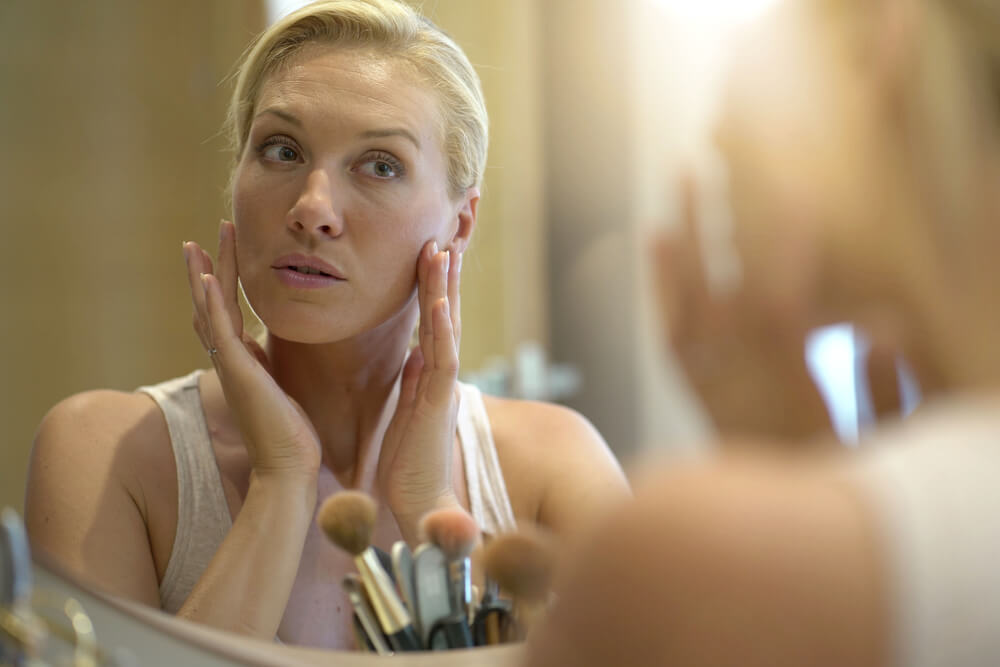
As we age, our appearance is often cursed by skin laxity. Loose skin, crepey skin, sagging skin – lax skin is called all those things. So, instead of wearing that sleeveless and sexy dress, we find ourselves choosing a long-sleeved, high-necked ensemble to cover up our crepey, loose skin. But does this have to happen to us?
Let’s dive right into the nitty gritty truth about skin laxity, shall we?
What is the cause of skin laxity?
There are many intrinsic and extrinsic factors causing skin laxity – as time goes on, our skin loses the benefits of two vital components: collagen and elastin. With each passing year, our skin has less of these two components and it loses elasticity, resulting in loose or sagging skin.
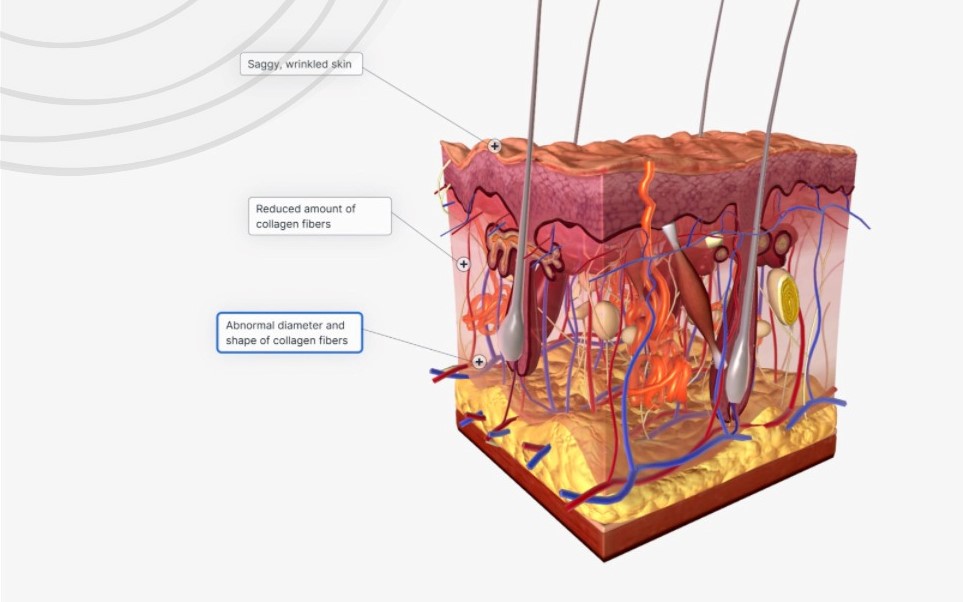
Collagen ensures skin’s firmness and strength, while elastin provides elasticity and helps skin stay tight. Genetics play a role in our body’s skin laxity – we’re genetically predisposed to having thinner skin and more wrinkles as we get older.
What are some of the extrinsic causes of skin laxity?
Extrinsic aging is largely due to our poor lifestyle habits, such as (you guessed it):
• Sun exposure and UV rays
• Addiction to smoking
• Pollution and other environmental factors
• Chronic stress and lack of sleep
• Poor diet and eating habits
• Not getting enough exercise
• Weight fluctuations and excess skin
What happens to your skin when you don’t wear sunblock?
Sun exposure accounts for most of the visible signs of skin aging – far more than all other contributing factors combined. When we expose our skin to the sun and its UV rays, the damage can include freckles, sun spots, pigmentation, and less collagen and elastin, as well as skin cancer. Additional signs of damage from UV rays include uneven skin tone, age spots, dryness, roughness, fine lines, and wrinkles.

To protect your overall skin quality, wearing sunblock every day is one of the best things you can do!
What are the intrinsic factors that affect our skin?
Intrinsic factors refer to the natural aging process. Other internal factors include our genetics and hormone levels, our skin’s ability to produce collagen and elastin, and the diminishing function of our oil glands.
Since oil glands keep skin hydrated and supple, the decreased function of these glands means that our skin becomes drier and more prone to lines, wrinkles, and loose or sagging skin.
How can you tell if you have skin laxity?
A simple “snap test” can estimate your level of skin elasticity. To do this, pinch your under-eye skin. If the skin snaps back quickly after the pinch, this indicates good elasticity. If your skin takes time to get back to its original position, however, this indicates low skin elasticity.

At what age do we normally notice skin laxity?
In our 30s and 40s, our skin becomes less elastic than it was in our youth. For women, menopause starts a downward slide in skin health, as our skin loses a third of its collagen.
By age 65, we have sagging skin that is fragile and thin. There are great things to enjoy about growing older, but these don’t include losing collagen and elastin, which are the key components of the issue that lies beneath our skin laxity.
Is it possible to reverse skin laxity?
Skin laxity is part of the aging process, so it can’t be reversed completely. However, there are a number of prevention strategies, lifestyle changes, and cosmetic procedures that can provide positive results.
How important is diet for minimizing skin laxity?
Boosting our body’s collagen production is one way to reduce loose skin. To stimulate collagen production, our bodies need to work on this from the inside. Healthy diets should include proteins (such as amino acids), vitamins, Omega-3 fatty acids, and water to encourage production of collagen and elastin.
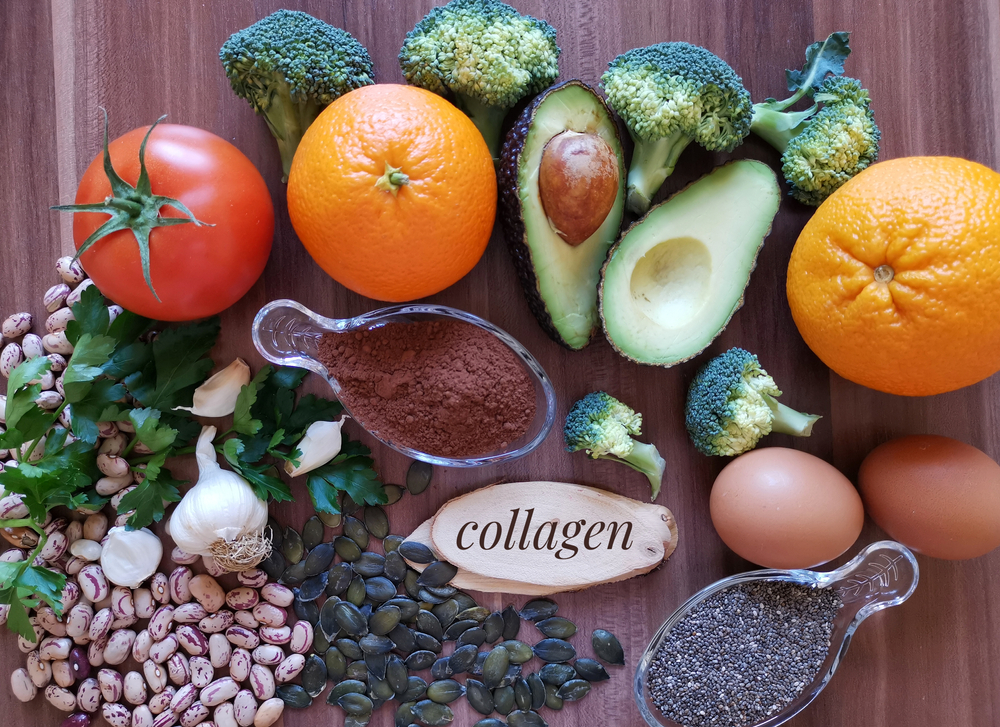
For skin firmness, strength, and elasticity, include foods in your diet that are rich in collagen and elastin. Our bodies make collagen by combining amino acids that are found in protein-rich foods like beef, chicken, fish, beans, legumes, eggs, nuts, and dairy products.
How does staying hydrated improve skin?
We’ve heard this so many times, but it’s true – staying well hydrated makes a huge difference in skin health. Increasing our daily water intake results in improved skin hydration and its overall function.
Do vitamins and other antioxidants help maintain skin elasticity?
The answer is a resounding “yes”! Diets high in antioxidants – such as vitamins C, A, D, and E – are key for maintaining skin’s elasticity. Vitamin C serum increases levels of collagen in skin for a more youthful appearance and higher levels of skin elasticity.
How does green tea aid skin health?
Green tea provides antioxidants that help skin cells stay healthy. Drinking green tea daily can give skin a radiant glow. And its advantages don’t stop there. You can also make face masks with a mixture of green tea and yogurt or make a homemade exfoliating scrub using green tea, sugar, and water.
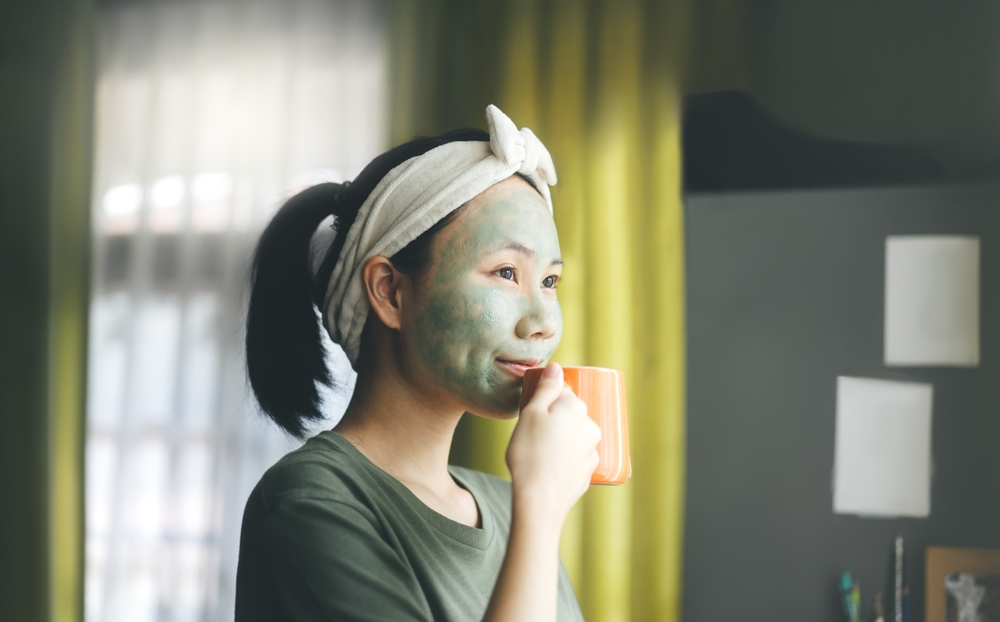
How does free radical damage affect the skin?
In our bodies, free radicals (unstable molecules) attack our cells, breaking down collagen and elastin, and causing damage to our skin, which accelerates premature skin aging – resulting in wrinkles, sagging skin, dryness, dullness, and unwanted pigmentation.
Antioxidants return free radicals to their balanced state before they damage your skin. Principal antioxidants are vitamin E, vitamin C, beta-carotene, and selenium.
Do topical creams work well to firm up skin?
“Firming” creams with collagen and elastin can hydrate and provide a boost to skin tightness, but their collagen and elastin molecules are too large to be absorbed through your skin – making these creams ineffective for regenerating collagen.
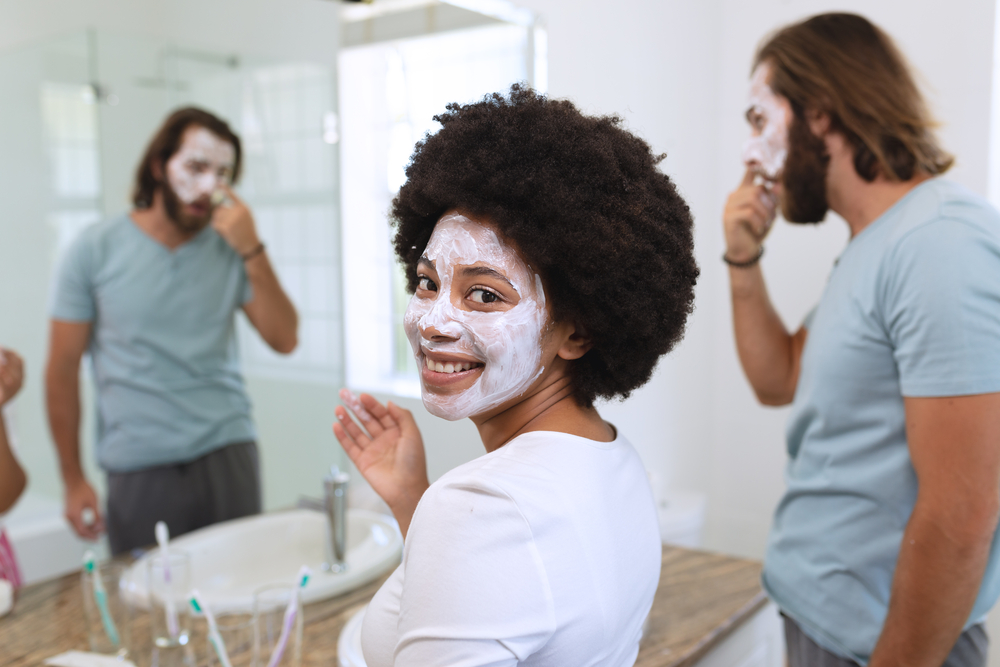
Other creams and serums contain retinol and retinoids, which boost collagen and elastin levels in your skin. Hyaluronic acid, which aids collagen production and keeps skin hydrated, is another star ingredient for reducing sagging and crepey skin.
Are there medical cosmetic treatments to reduce skin laxity?
Advanced technology treatments for tightening skin and reducing skin aging include:
1. Laser resurfacing – Stimulates skin cell regeneration.
2. Ultrasound therapy – Promotes collagen production.
3. Microneedling – Minimizes wrinkles and other skin concerns.
4. Neurotoxin injections – Diminishes lines and wrinkles.
5. Radiofrequency – Utilizes radio wave energy to trigger collagen production.
6. Dermal fillers – Decreases sagging skin and other signs of aging.
How do Sofwave™ treatments reduce skin laxity?
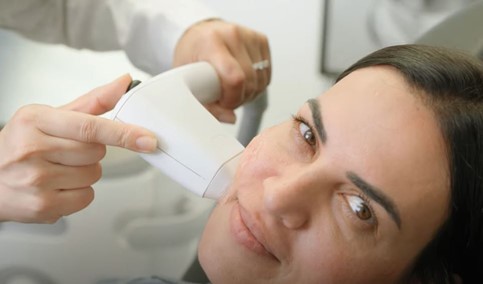
Sofwave™ is clinically proven to remodel collagen, which improves facial lines and wrinkles, and lifts the eyebrows, submental, and neck area. Using the Sofwave proprietary Synchronous Ultrasound Parallel Beam SUPERB™ technology, ultrasound energy precisely passes through the skin’s surface, heating the mid-dermal tissue at just the precise depth and temperature to rejuvenate collagen fibers and improve the overall appearance of the skin.
How effective are Sofwave treatments?
Most Sofwave™ patients show significant improvement after just one 45-minute treatment. During the procedure, the Sofcool™ cooling mechanism protects the skin from burning – ensuring safety.
What are medical professionals saying about Sofwave?
Amy Forman Taub, MD, FAAD, of Advanced Dermatology, a practice near Chicago, Illinois, has provided Sofwave™ treatments to her patients, and has also used the procedure to benefit her own appearance.
Last year, Newsweek magazine ranked Dr. Taub as #1 in Illinois and #10 in the nation in its America’s Best Cosmetic Dermatologists 2022 list.
“The Sofwave™ procedure reduced my neck’s wrinkles and the laxity,” she said. “Also, my jowl line improved, and my nasolabial folds are better, so I’ve seen a definite result. Sofwave technology enables the patient’s own body to generate new collagen and elastin over a period of a few months after the treatment.”
Have Sofwave™ treatments been FDA cleared?
The U.S. Food and Drug Administration has cleared Sofwave™ SUPERB™ technology for lifting the eyebrow and lifting lax submental tissue (beneath the chin) and neck tissue, which can also affect the appearance of lax tissue in the submental neck regions.
The FDA has also cleared SUPERB™ technology for a non-invasive dermatological aesthetic treatment to improve facial lines and wrinkles, and to improve the short-term appearance of cellulite.
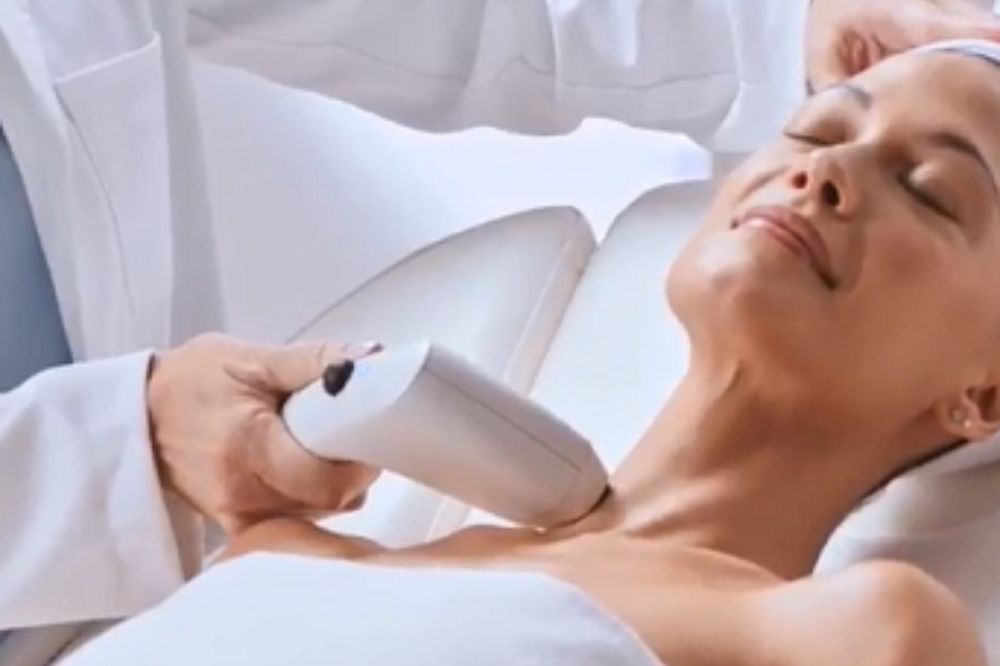
What are Sofwave™ treatments like?
The discomfort level with Sofwave™ treatments is minimal. Before the procedure, a topical anesthetic cream is applied to your skin so you stay comfortable while the ultrasound energy is delivered. As the treatment progresses, the skin may feel warm. Afterward, there is little discomfort, and you can go right back to your activities.
Sofwave™ procedures take 45 minutes, making it possible to have a treatment over your lunch hour and to return to work with your skin fully refreshed!
References:
- “Skin Laxity: What Causes It? How Can We Treat It?,” Dr. Alison Tendler, Artisan Skin and Laser Center, https://artisanskinandlaser.com/blog/skin-laxity-what-causes-it-how-can-we-treat-it
- “How to Tighten Skin on the Face and Neck,” Kathryn Watson, healthline.com, https://www.healthline.com/health/beauty-skin-care/how-to-tighten-skin-on-face
- “6 Ways to Tighten Loose Skin,” Jennifer Huizen, Medical News Today, https://www.medicalnewstoday.com/articles/326536
- “How to Prevent and Improve Crepey Skin,” Tom Seymour, Medical News Today, https://www.medicalnewstoday.com/articles/320789
- “Skin Laxity and How It Changes Over Time,” Cosmetic Surgery Associates, https://cosmeticplastics.com/medical-spa/skin-laxity/
- “How to Keep Your Skin Firm as You Age,” Sarah Kester, healthline.com, https://www.healthline.com/health/firmness-skin
- “Non-Surgical Skin Tightening,” American Board of Cosmetic Surgery, https://www.americanboardcosmeticsurgery.org/procedure-learning-center/non-surgical-procedures/skin-tightening/
- “11 Ways to Reduce Premature Skin Aging,” American Academy of Dermatology Association, https://www.aad.org/public/everyday-care/skin-care-secrets/anti-aging/reduce-premature-aging-skin

